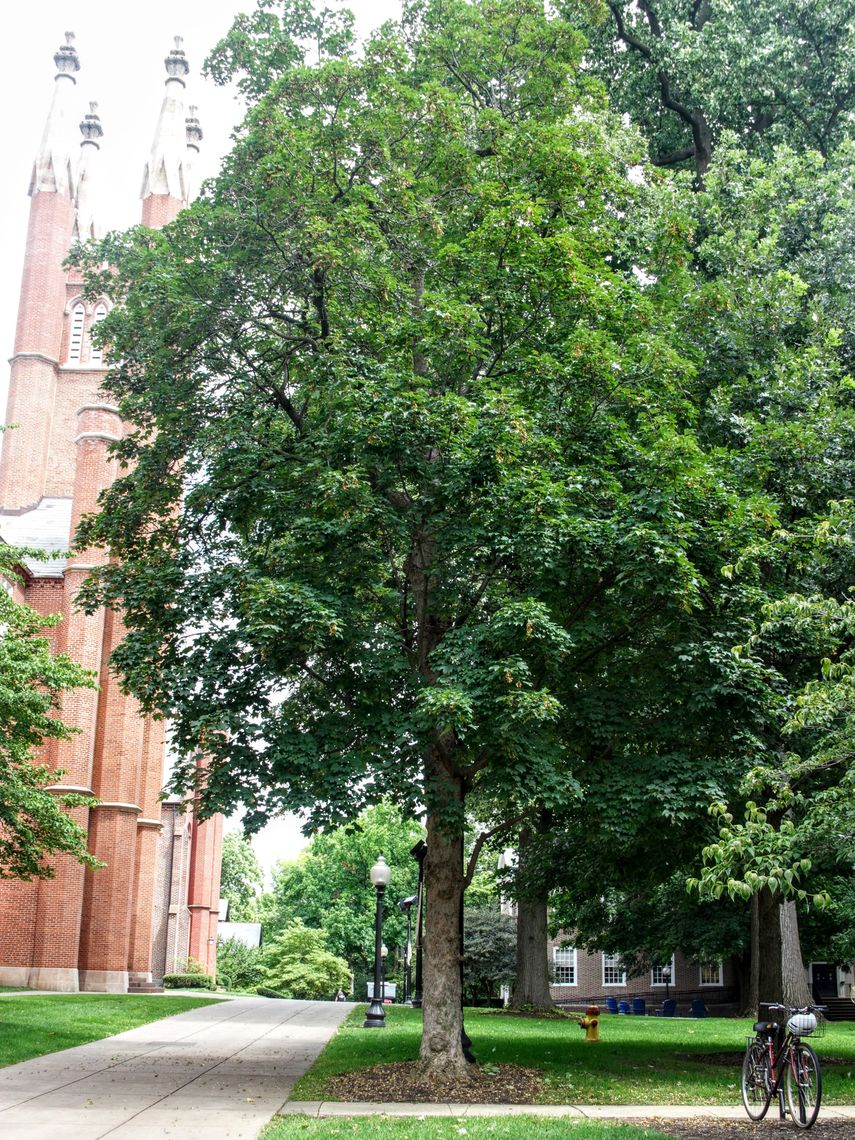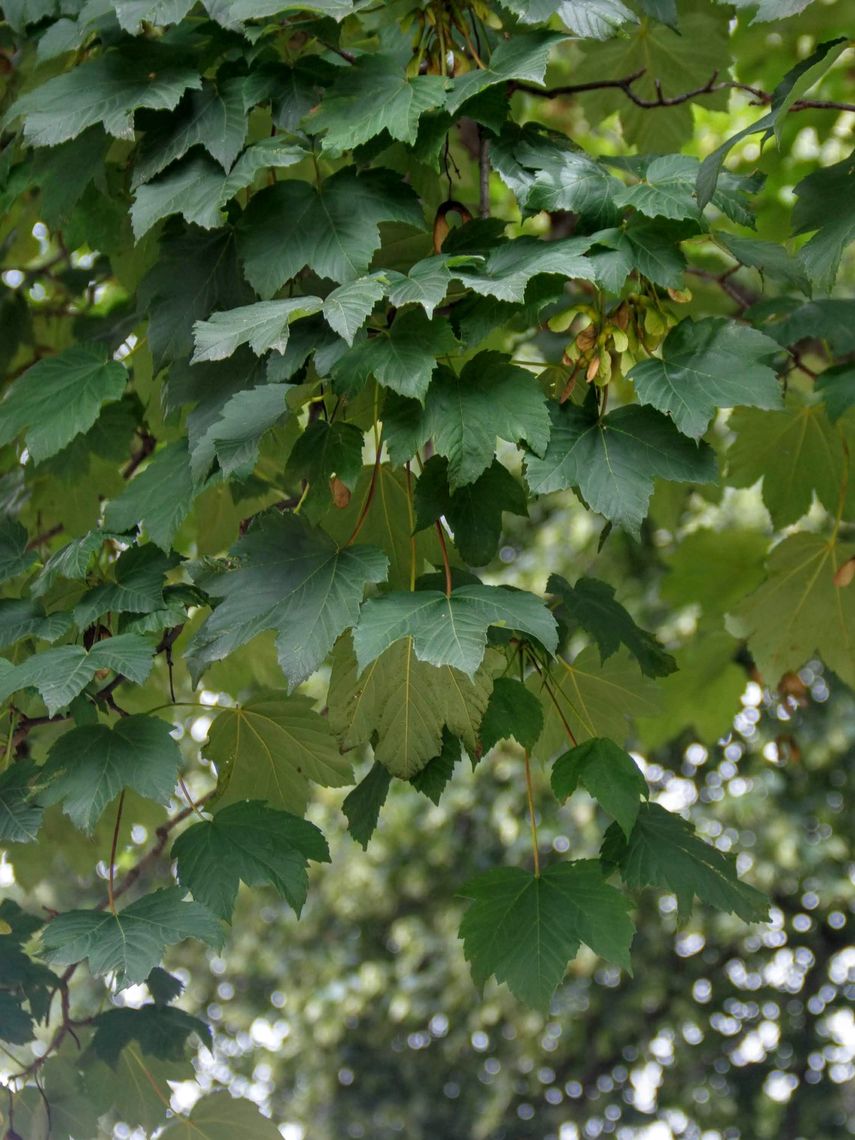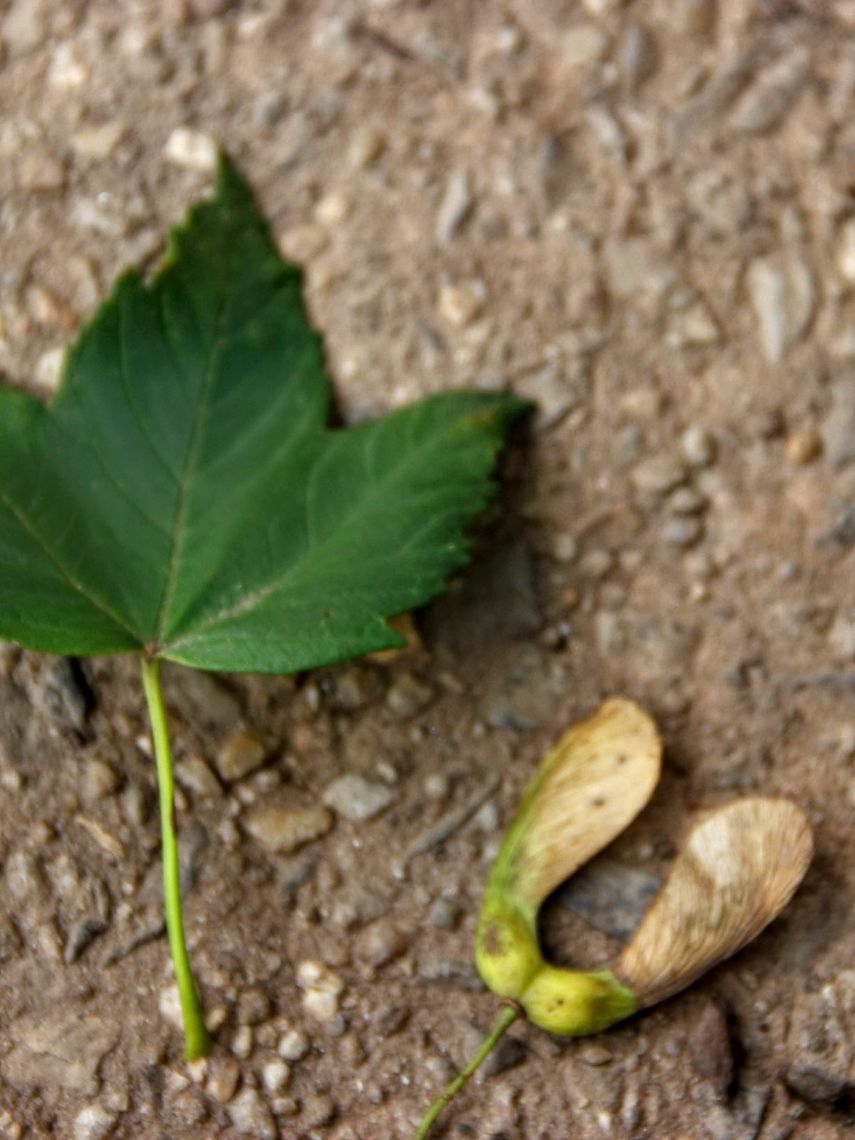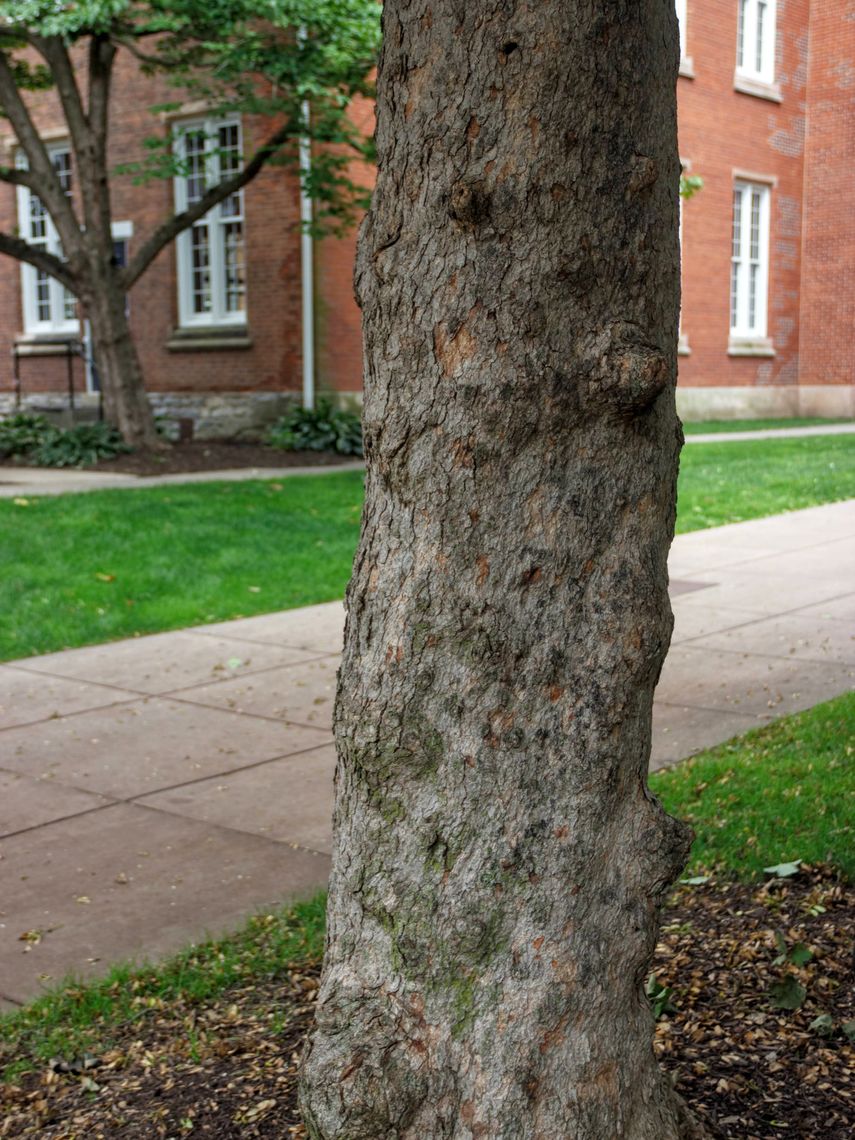Sycamore Maple (Acer Pseudoplatanus)
The sycamore maple is a tall and oval shaped tree, and is often used as a shade or street tree. Small, fragrant, yellow clusters of flowers begin to form in the spring, though are often not noticeable until the whole tree is in bloom. The tree's leaves are 5-lobed, dark green, prominently veined, and leathery. The bark will exfoliate, exposing the orange color of the inner bark. This tree attracts insect pollinators.
Family: Aceraceae (Maple)
Characteristics: The 3-inch to 6-inch-long leaves are 5-lobed, leathery, prominently veined, and dark green. The leaves do not usually change color in the fall. In the spring, fragrant, pale yellow flowers begin to bloom in upright clusters, though are hard to notice until the whole tree is in bloom. These flowers are followed by samaras (paired winged fruits). Bark on mature trees is brown or gray and often exfoliates, exposing the orange-brown inner bark. The tree has an upright and spreading branching pattern and has an oval to rounded shape. It grows 40-60 feet high and 25-40 feet wide.
Foliage: Deciduous (leaves lost seasonally)
Geographic Origin: Northwest to central Europe, Italy, Western Asia (non-native)
Cultivation Notes: Requires low maintenance. Does best in full sun to part-shade. Prefers medium moist and well-drained soils, though is tolerant to a wide range of soil types, including sandy, clay based, and saline soils. This species does best in cool summer climates.
Number on Campus: 4
Sources: Dirr, Morton Arboretum, Missouri Botanical Garden




